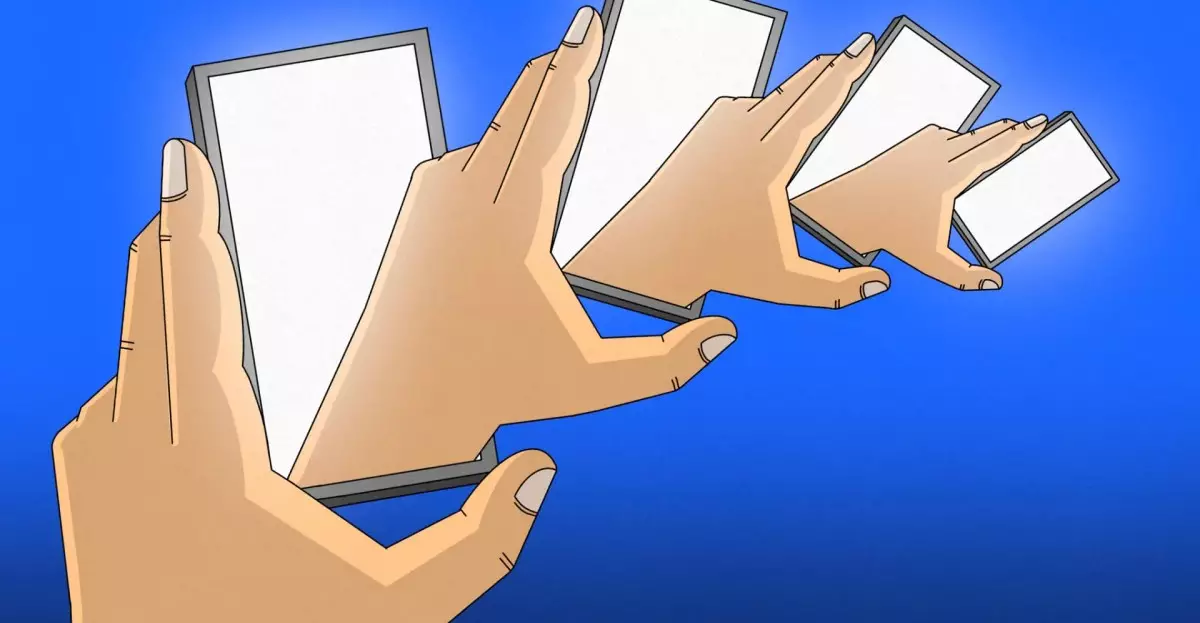In the fast-evolving tech landscape, the resurgence of retro gadgets can often evoke waves of nostalgia and excitement. Among such devices lies the Pebble smartwatch, a product that garnered a devoted fanbase during its initial launch. Eric Migicovsky, the visionary behind the Pebble, is now on a mission to resurrect this beloved device. This article explores Migicovsky’s endeavors, the current state of smaller smartphones, and the implications of his new venture for tech enthusiasts and mobile device users alike.
Eric Migicovsky has played a pivotal role in popularizing smartwatches. The original Pebble broke new ground when it was launched through a Kickstarter campaign, allowing users to access notifications and run basic applications with remarkable battery longevity. Today, as Migicovsky sets his sights on reviving the Pebble smartwatch, he aims to recapture the essence of what made the original so appealing. In a recent interview, he emphasizes that the new Pebble will retain its fundamental simplicity, which distinguished it from the overly complicated smartwatches that dominate the market today.
Migicovsky’s strategy hinges on using open-source software, allowing developers to customize the device to a high degree. He has made it clear that this new iteration of the Pebble won’t boast an overwhelming array of new features. Instead, it represents a return to the core simplicity that original users cherished. As the tech world clamors for products packed with cutting-edge capabilities, Migicovsky chooses to focus on the basics, reimagining the Pebble through a lens of nostalgia and practicality.
While Migicovsky rekindles old ambitions with the Pebble, another area of tech nostalgia—the small smartphone market—remains largely untouched. The Small Android Phone Project, which aimed to bring back compact phones, has hit significant roadblocks. With the gradual demise of smaller devices, 2023 marked a turning point for enthusiasts who grew weary of waiting for meaningful developments in this domain.
Migicovsky has acknowledged that the small phone initiative is currently not his priority, although he still harbors hope that someone else might take the reins. This sentiment reflects a broader issue in the tech industry where larger form factors have triumphed, leaving many users longing for the ergonomics and portability inherent in smaller phones. Users have started to adapt to alternatives, such as foldable devices like the Samsung Galaxy Z Flip, which while not compact in the traditional sense, provide a semblance of functionality that meets consumer demands.
As the revival of the Pebble smartwatch continues, potential users have heightened expectations regarding what the new iteration will provide. In his communications, Migicovsky has indicated several prospective features basis user feedback; these include a chat client to overcome previous communication limitations and a basic AI implementation that may allow interaction with platforms like ChatGPT.
While these features are promising, it is essential for users to temper their expectations. Migicovsky openly states that potential customers should not anticipate drastic changes from the original design. However, this straightforward approach may serve to attract a demographic that values functionality and usability over superfluous features.
Additionally, plans for hardware components suggest that the new Pebble will not be built from existing technology but will instead introduce novel specifications aimed at enhancing performance while being energy-efficient. The commitment to user customization through programmable firmware marks an exciting shift in how smartwatches can be experienced and adapted.
In a world increasingly characterized by complexity and flashy features, Eric Migicovsky’s efforts to revive the Pebble smartwatch provide a refreshing perspective grounded in simplicity and user empowerment. Meanwhile, the struggles of compact smartphones serve as a backdrop to the ongoing evolution of consumer electronics, revealing a landscape fraught with competing interests and shifting user preferences.
The excitement surrounding the new Pebble is not merely about the watch’s return but also speaks to a larger longing for thoughtful, practical technology that resonates with users’ desires for nostalgia and meaningful interactions. As technological boundaries continue to expand, the Pebble’s revival may well signify a much-needed reconciliation between innovation and simplicity in the realm of wearable devices.

